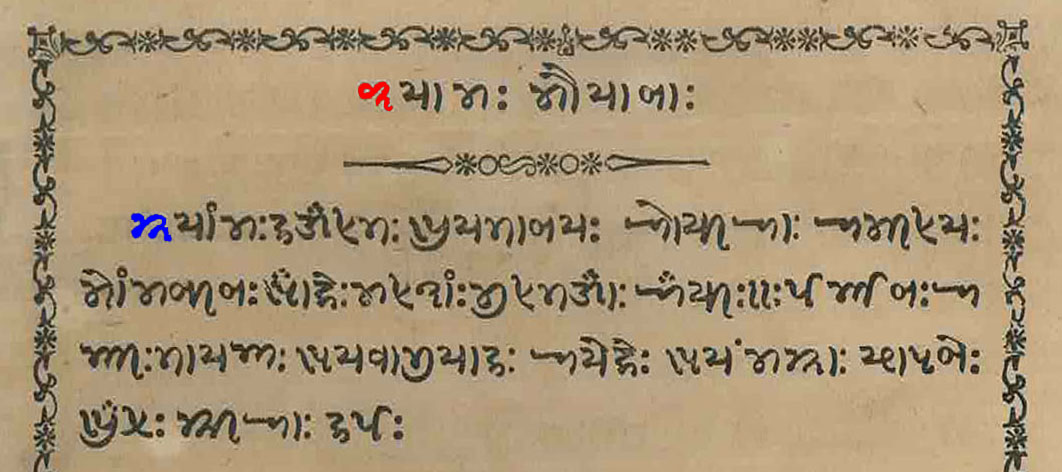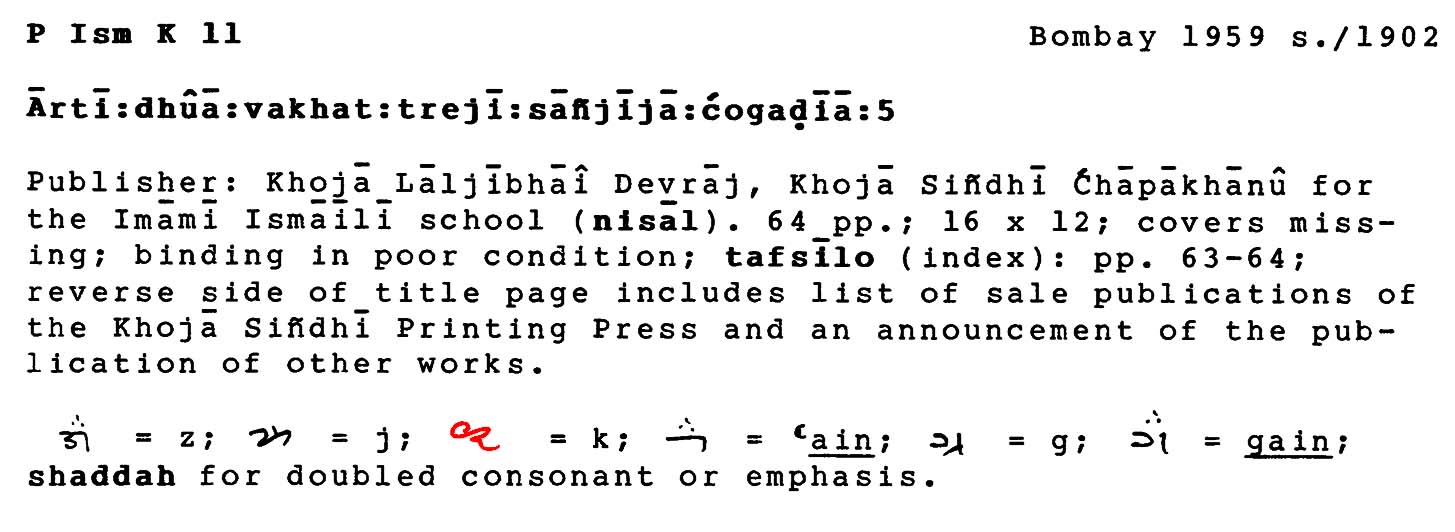The following excerpt from a printed Khojki book contains two forms of
ka. The ka highlighted in blue is the representative glyph of
U+11208 KHOJKI LETTER KA (to be published in Unicode 7), while the red
ka is the alternate form.

Here, the red ka is used in the word kalām, while the blue ka is
used in the word kalāṃm, both are representations
of the Arabic word کلام kalām “composition, work”; the anusvāra in
kalāṃm is not semantically significant.
The alternate form is used in other sources for representing ka,
suggesting that the red ka is a glyphic variant:

However, it also appears in other source, where it is used for
representing qa (the Arabic ق qāf), suggesting that it may indeed
be a distinctive letter, a possible *KHOJKI LETTER QA:

I have not yet seen this work, so I do not know the context in which
the letter is used for qāf.
The shape of KHOJKI LETTER KA is fairly uniform across printed
materials and manuscripts. It is of interest that both forms occur in
the same document, as shown in the first image, and in such close
proximity. The excerpt is from a printed book and is likely a faithful
reproduction of a manuscript. Analysis of several manuscript sources
is necessary in order to determine whether the red ka is a glyphic
variant of KA or a distinct Khojki letter QA.